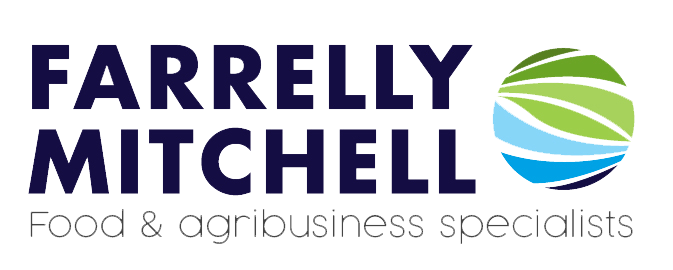The client
The client for this project is a leading global crop innovation trade association representing many of the world’s foremost agricultural science‑ and crop protection companies. As advocates for innovative and sustainable agricultural practices, the organisation plays a crucial role in shaping policy and fostering technological advancement across the continent. It champions science-based regulatory frameworks and aims to ensure that Europe’s farmers have access to the tools they need to remain competitive, productive, and environmentally responsible. The association serves as a vital link between industry innovators, policymakers, and the wider agrifood sector, promoting dialogue and providing ‑evidence-based‑ insights to inform critical decisions affecting European food security and economic prosperity.
The backstory
Livestock, dairy, and meat industries form the backbone of many rural European economies, directly employing more than 6 million people and generating revenues of more than €400 billion annually. However, the competitiveness of these sectors depends on imported genetically modified (GM) soybeans. These soybeans are indispensable to the EU’s feed supply, accounting for 17% of all crude protein available for livestock and 55% of high protein feed materials, due to their cost efficiency and better nutritional profile.
The problem
With over 90% of the EU’s soybean requirements sourced from the world’s top GM-producing nations – Brazil, the US, and Argentina – the EU is overwhelmingly import dependent. At the same time the European Green Deal was reshaping political attitudes towards biodiversity.
With EU regulation for GMOs under constant review, the client recognised an urgent need to understand the potential economic fallout from a hypothetical ban on these imports. The association lacked a quantitative, evidence-based assessment that could clearly articulate the direct and indirect costs of such a decision. They needed to move beyond speculation and equip themselves with a robust analysis which would detail the specific impacts a ban would have on the feed, livestock, dairy, and meat manufacturing sectors.
This analysis would need to account for exactly how much of an impact a ban on GM soybeans would have at each stage of the supply chain, from increased feed costs on farms, through reduced profits for livestock and meat producers, to higher prices in supermarkets. Without these concrete figures, they would struggle to convince policymakers of the true scale and consequences that the policy was likely to have.
The solution
Farrelly Mitchell designed and executed a comprehensive, two-phase economic analysis to provide to the client. The research report was structured to first establish a detailed, evidence-based analysis of the current market before modelling the precise impacts that a policy change would entail.
Phase 1
The initial phase involved an exhaustive baseline assessment of the entire EU feed value chain. Our experts examined the EU’s regulatory environment for GMOs, mapping its complexities and lengthy authorisation timelines. We developed detailed EU feed commodity balance sheets to quantify the pivotal role of soybean in the bloc’s protein supply, highlighting GM soy’s benefits and versatility across different livestock systems.
This was complemented by an in-depth supply chain analysis which evaluated the economic structures and sensitivities of the feed manufacturing, livestock farming, and downstream dairy and meat processing industries, all of which operate on tight margins. To complete the picture, we assessed the production capabilities as well as traceability, certification and tracking systems in key supplier countries. We also analysed the global availability and price dynamics of both soybean and its potential alternatives.
Phase 2
Building on this analysis, the second phase focused on scenario development to quantify the economic impact of a hypothetical ban on GM soybean imports. We first calculated the immediate supply gap that such a policy would create and identified the expected shortfall.
We then modelled how the EU market would be forced to address this deficit, whether it could source from the limited global supply of non-GM soybeans or whether it would need to turn to crop-based substitutes like rapeseed meal or legumes, and what the impact of substitution would have.
Using established price elasticity models, we forecast the resulting price shocks and projected the cost implications for both non-GM soybeans and their alternatives. This analysis culminated in three distinct scenarios that detailed how the change in cost were likely to reverberate through the value chain. These scenarios modelled the impact if the costs were fully absorbed by manufacturers, shared evenly between manufacturers and consumers, or passed on entirely to the end consumer.
The final output was a detailed report and workshop presentation that provided the client with a scientifically rigorous and commercially grounded evidence base, which could inform its policy decisions and support its dialogue with policymakers.
The results
The project provided the client with a robust, evidence-based framework that fundamentally strengthened their capacity to engage with policymakers on one of European agriculture’s most contentious issues. By replacing decades-old estimates with rigorously modelled scenarios grounded in current market realities, the analysis provided the credibility and precision the association needed to move the debate from ideological speculation to economic fact.
This evidence base has helped unify stakeholder messaging across member companies, farmer unions, and allied trade bodies, transforming fragmented concerns into a coordinated, data-driven approach that resonates with economic decision-makers at both national and EU levels.
The report’s most significant contribution was its quantification of the supply chain disruption a GM soybean ban would trigger. Detailed scenario modelling revealed how costs could cascade through every stage of production right through to consumers. By providing this level of granular insight, the report was able to expose sector-specific vulnerabilities and demonstrate the impact on livestock operations, highlighting the potential risks to food security as well as the implications for rural employment across member states.
Critically, the research also dismantled the assumption that GM soybeans could easily be replaced with non-GM alternatives or substitute crops. The analysis clearly demonstrated nutritional mismatches and availability constraints that policymakers had previously underestimated and clearly illustrated both where and how non-GM supplies were insufficient to meet EU demand.
Beyond its immediate policy impact, the project also provided the client with a modelling toolkit. This living asset enables the association to update its economic projections continuously, ensuring their arguments remain current and up to date.
Forge ahead with Farrelly Mitchell
At Farrelly Mitchell, we combine rigorous economic analysis with deep sector expertise to provide our clients with actionable market intelligence. Whether you’re facing regulatory uncertainty, market disruption, or need to quantify the impact of policy changes on your industry, organisation or value chain, our team delivers the clarity and credibility you need to make the right decisions.
From market analysis and supply chain modelling to policy impact assessments and strategic advisory, we provide the insights that drive strategic growth and competitive advantage.
To learn more about how we can help your organisation achieve its strategic objectives, contact us today.










